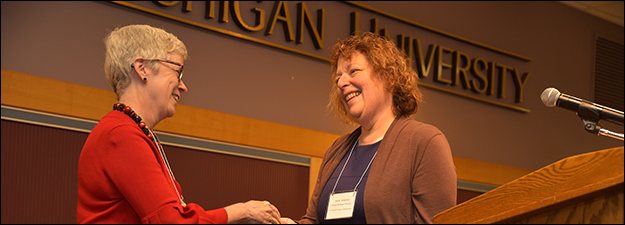New Research in Parish Church Art and Architecture in England and on the Continent, 1100-1600 I
Sponsoring Organization(s)
Special Session
Organizer Name
Sarah Blick
Organizer Affiliation
Kenyon College
Presider Name
Louise Hampson
Presider Affiliation
Centre for the Study of Christianity and Culture, Univ. of York
Paper Title 1
The Font Canopy at Saint Peter Mancroft, Norwich: Toward a Reconstruction with New Finds from the Philadelphia Museum of Art
Presenter 1 Name
Amy Gillette, Zachary Stewart
Presenter 1 Affiliation
Temple Univ., Fordham Univ.
Paper Title 2
"High and Lifted Up": The Elevation of the Host and the Reservation of the Sacrament in Late Medieval England
Presenter 2 Name
Allan Barton
Presenter 2 Affiliation
Univ. of Wales Trinity St. David
Paper Title 3
Mercantile Ambitions and Angelic Representations in Late Medieval Norwich
Presenter 3 Name
Sarah Cassell
Presenter 3 Affiliation
Univ. of East Anglia
Paper Title 4
The Early Sixteenth-Century Stained-Glass Program of Saint Michael-le-Belfrey, York: Intersections between Lay Piety and Imaging the Community of Saints
Presenter 4 Name
Lisa Reilly, Mary B. Shepard
Presenter 4 Affiliation
Univ. of Virginia, Univ. of Arkansas-Fort Smith
Start Date
12-5-2017 1:30 PM
Session Location
Fetzer 2040
Description
Medieval parish churches though created as placed to celebrate the liturgy, became true community centers. Parishioners would agree on business deals at the church door, hold village celebrations in the churchyard, and paid taxes, organized poor relief, lent out plows, placed fire-fighting equipment and agreed-upon weights and measures, and stored important documents in the nave and tower. Because villagers had reasons to enter the church almost every day, artist and patrons sought to create compelling visual images that would continue to engage the parishioners over many years.
These sessions seek papers that explore new approaches to some very old architecture, sculpture, painting, and other church furnishings. Why were certain plans acceptable and others ignored? What determined the placement of windows, doors, ceiling openings, and trapdoors and how did that change throughout the centuries? How did artists respond to increased demand from pious laypeople for intense, emotional devotion, but in a public space through ever-changing decorative programs?
Sarah Blick
New Research in Parish Church Art and Architecture in England and on the Continent, 1100-1600 I
Fetzer 2040
Medieval parish churches though created as placed to celebrate the liturgy, became true community centers. Parishioners would agree on business deals at the church door, hold village celebrations in the churchyard, and paid taxes, organized poor relief, lent out plows, placed fire-fighting equipment and agreed-upon weights and measures, and stored important documents in the nave and tower. Because villagers had reasons to enter the church almost every day, artist and patrons sought to create compelling visual images that would continue to engage the parishioners over many years.
These sessions seek papers that explore new approaches to some very old architecture, sculpture, painting, and other church furnishings. Why were certain plans acceptable and others ignored? What determined the placement of windows, doors, ceiling openings, and trapdoors and how did that change throughout the centuries? How did artists respond to increased demand from pious laypeople for intense, emotional devotion, but in a public space through ever-changing decorative programs?
Sarah Blick

